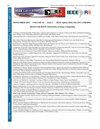阿根廷西北部估算太阳辐照度的卫星和再分析模式的评价
IF 1.3
4区 工程技术
Q3 COMPUTER SCIENCE, INFORMATION SYSTEMS
引用次数: 0
摘要
准确的太阳能资源评估对太阳能项目的发展至关重要,特别是在气候和地理条件复杂的地区。本研究评估了各种基于卫星和再分析模型在估计阿根廷西北部全球水平辐照度(GHI)方面的性能,重点关注两个具有不同环境条件的地点:La Quiaca和Salta。对5个卫星模型(CAMS Heliosat-4、NREL NSRDB、GOES DSR、lssa - saf MDSSFTD和GOES G-CIM)和2个再分析数据集(MERRA-2和ERA-5)进行了分析,并与2020年至2023年间记录的高质量地面测量数据进行了比较。结果表明,G-CIM和NSRDB模型提供了最准确的辐照度估计,即使在极端海拔或可变地形反射率的挑战性环境中也能有效地将误差降至最低。在Salta的10分钟时间尺度上,G-CIM模型的均方根偏差(RMSD)为23.4%,平均偏差为4.8%,而NSRDB模型的RMSD为26.6%,平均偏差为4.2%。在La Quiaca,两个模型的RMSD值都低于20%,平均偏差低于1%。在60分钟尺度上,在Salta, G-CIM和NSRDB的rmsd分别为20.7%和19.7%,相应的平均偏差分别为5.4%和3.6%,而在La Quiaca,他们的平均偏差保持在1%以下,G-CIM和NSRDB的rmsd分别为13.2%和12.6%。相反,MERRA-2和ERA-5再分析模式显示出较高的不确定性,特别是在小气候变化显著的地区。该研究强调了使用经过当地验证的卫星数据进行准确太阳资源评估的重要性,并强调在应用全球辐照度模型时需要针对具体地点进行调整。这些发现有助于改善阿根廷西北部太阳能项目的规划和决策,并为研究人员、政策制定者和行业专业人士提供有价值的见解。本文章由计算机程序翻译,如有差异,请以英文原文为准。
Evaluation of Satellite and Reanalysis Models for Solar Irradiance Estimation in Northwest Argentina
Accurate solar resource assessment is critical for the development of solar energy projects, especially in regions with complex climatic and geographic conditions. This study evaluates the performance of various satellite-based and reanalysis models in estimating global horizontal irradiance (GHI) in Northwestern Argentina, focusing on two locations characterized by different environmental conditions: La Quiaca and Salta. Five satellite-based models (CAMS Heliosat-4, NREL NSRDB, GOES DSR, LSA-SAF MDSSFTD, and GOES G-CIM) and two reanalysis datasets (MERRA-2 and ERA-5) were analysed and compared with high-quality ground-based measurements recorded between 2020 and 2023. The results show that the G-CIM and NSRDB models provide the most accurate irradiance estimates, effectivelyminimising errors even in challenging environments with extreme altitude or variable terrain reflectivity. At the 10-minute time scale in Salta, the G-CIM model yields a root mean squared deviation (RMSD) of 23.4% and a mean bias of 4.8%, whereas the NSRDB model records an RMSD of 26.6% and a mean bias of 4.2%. In La Quiaca, both models achieve RMSD values below 20% and mean biases under 1%. At the 60-minute scale, in Salta, G-CIM and NSRDB exhibit RMSDs of 20.7% and 19.7%, with corresponding mean biases of 5.4% and 3.6%, respectively, while in La Quiaca they maintain mean biases below 1% and RMSDs of 13.2% for G-CIM and 12.6% for NSRDB. Conversely, the MERRA-2 and ERA-5 reanalysis models showed higher uncertainties, particularly in areas with significant microclimatic variations. The study highlights the importance of using locally validated satellite data for accurate solar resource assessment and emphasises the need for site-specific adjustments when applying global irradiance models. These findings contribute to improved planning and decision-making for solar energy projects in Northwest Argentina and provide valuable insights for researchers, policy makers and industry professionals.
求助全文
通过发布文献求助,成功后即可免费获取论文全文。
去求助
来源期刊

IEEE Latin America Transactions
COMPUTER SCIENCE, INFORMATION SYSTEMS-ENGINEERING, ELECTRICAL & ELECTRONIC
CiteScore
3.50
自引率
7.70%
发文量
192
审稿时长
3-8 weeks
期刊介绍:
IEEE Latin America Transactions (IEEE LATAM) is an interdisciplinary journal focused on the dissemination of original and quality research papers / review articles in Spanish and Portuguese of emerging topics in three main areas: Computing, Electric Energy and Electronics. Some of the sub-areas of the journal are, but not limited to: Automatic control, communications, instrumentation, artificial intelligence, power and industrial electronics, fault diagnosis and detection, transportation electrification, internet of things, electrical machines, circuits and systems, biomedicine and biomedical / haptic applications, secure communications, robotics, sensors and actuators, computer networks, smart grids, among others.
 求助内容:
求助内容: 应助结果提醒方式:
应助结果提醒方式:


